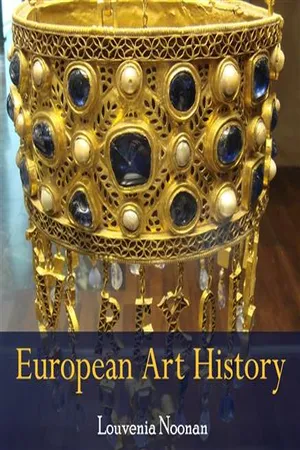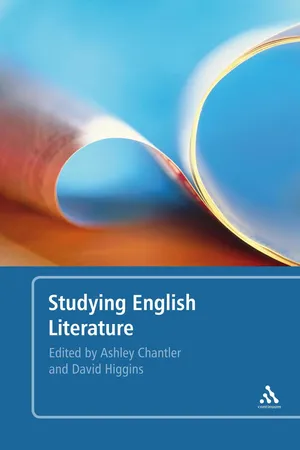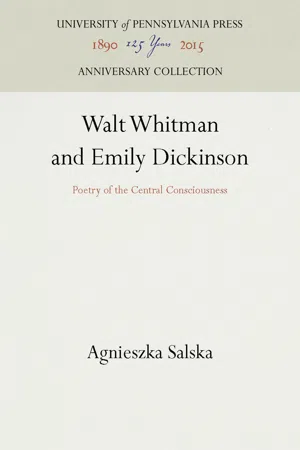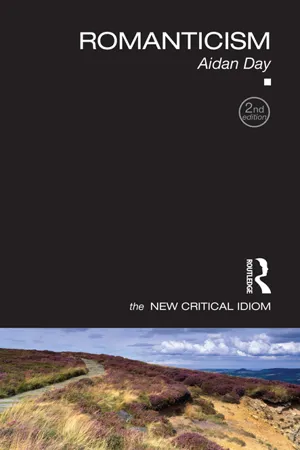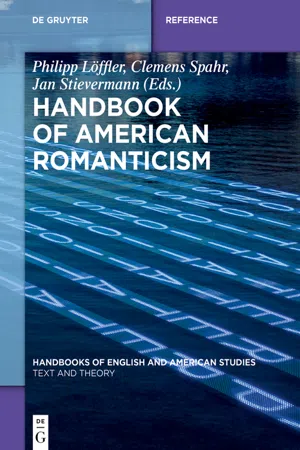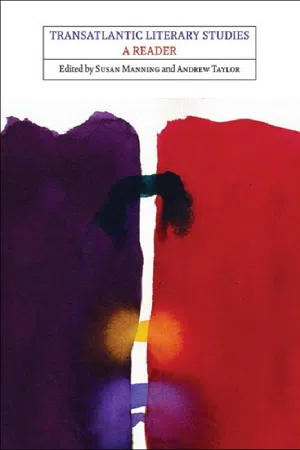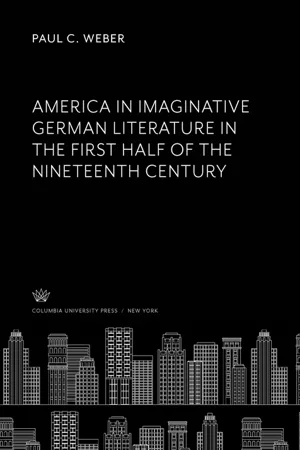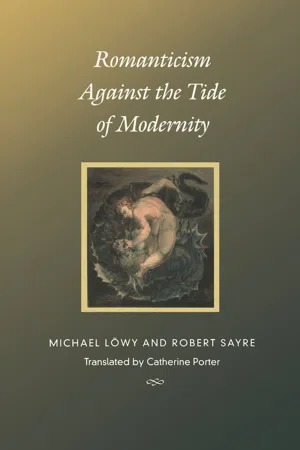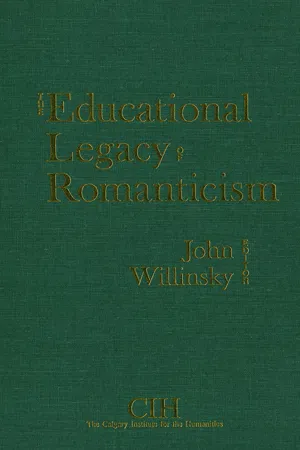Literature
American Romanticism
American Romanticism was a literary movement in the early 19th century that emphasized emotion, imagination, and individualism. It rejected the rationalism of the Enlightenment and focused on the beauty of nature, the supernatural, and the exotic. Key themes included the celebration of the individual, the exploration of the unknown, and the rejection of societal norms. Notable authors of this period include Edgar Allan Poe, Nathaniel Hawthorne, and Washington Irving.
Written by Perlego with AI-assistance
Related key terms
1 of 5
10 Key excerpts on "American Romanticism"
- No longer available |Learn more
- (Author)
- 2014(Publication Date)
- The English Press(Publisher)
There are picturesque local color elements in Washington Irving's essays and especially his travel books. Edgar Allan Poe's tales of the macabre and his balladic poetry were more influential in France than at home, but the romantic American novel developed fully in Nathaniel Hawthorne's atmosphere and melodrama. Later Transcendentalist writers such as Henry David Thoreau and Ralph Waldo Emerson still show elements of its influence and imagination, as does the romantic realism of Walt Whitman. The poetry of Emily Dickinson—nearly unread in her own time—and Herman Melville's novel Moby-Dick can be taken as epitomes of American Romantic literature. By the 1880s, however, psychological and social realism was competing with romanticism in the novel. Influence of European Romanticism on American writers The European Romantic movement reached America in the early nineteenth century. American Romanticism was just as multifaceted and individualistic as it was in Europe. Like the Europeans, the American Romantics demonstrated a high level of moral enthusiasm, commitment to individualism and the unfolding of the self, an emphasis on intuitive perception, and the assumption that the natural world was inherently good, while human society was filled with corruption. Romanticism became popular in American politics, philosophy and art. The movement appealed to the revolutionary spirit of America as well as to those longing to break free of the strict religious traditions of early settlement. The Romantics rejected rationalism and religious intellect. It appealed to those in opposition of Calvinism, which involved the belief that the universe and all the events within it are subject to the power of God. The Romantic movement gave rise to New England Transcendentalism which portrayed a less ________________________ WORLD TECHNOLOGIES ________________________ restrictive relationship between God and Universe. - eBook - PDF
- Ashley Chantler, David Higgins, Ashley Chantler, David Higgins(Authors)
- 2010(Publication Date)
- Continuum(Publisher)
Part III Studying Romantic and Victorian Literature (1789–1901) This page intentionally left blank The Romantic Period 7 David Higgins Chapter Overview Historical Context 113 Key Authors and Texts 117 Criticism and Literary Theory 123 Case Study: William Wordsworth’s Poetry 126 Case Study: Jane Austen’s Pride and Prejudice 129 Further Reading 133 Historical Context The ‘Romantic Period’ is tricky to pin down. It generally refers a period from about 1780 to about 1830, but there is no consensus over precise start or end dates. The problem is that the adjective ‘Romantic’ and its associated noun ‘Romanticism’ are used to describe a diverse set of responses to com-plex socio-cultural changes that took place in western Europe during about a century. Critics and historians have struggled over the years to define Romanticism and A. O. Lovejoy famously argued in ‘On the Discrimination of Romanticisms’ (1924) that the term was used so broadly that it had become effectively meaningless. Romanticism has tended to be associated with certain concepts and areas of human experience: for example, feeling, revolution, the imagination, nature, and introspection. It has often been contrasted with eighteenth-century literature’s emphasis on reason, order, imitation, urban life, and sociability. However, once you start to unpack these grand general-izations, they become increasingly hard to sustain. For example, plenty of eighteenth-century literature is introspective, and plenty of Romantic litera-ture is interested in sociability (see Cox; James; and Russell and Tuite). And, as discussed in the previous chapter, the focus on the relationship between self and landscape that you see in many Romantic-period texts has its roots 113 in the work of eighteenth-century poets such as Collins, Cowper, Gray, and Thomson. - eBook - PDF
Walt Whitman and Emily Dickinson
Poetry of the Central Consciousness
- Agnieszka Salska(Author)
- 2016(Publication Date)
14 On the whole, eminent stu-7 / Whitman, Dickinson, and Literary Individualism dents of the period incline today toward locating its main signifi-cance in the changed view of the individual. To quote Howard Mumford Jones: The human being became at once more lonely and more indepen-dent, more unpredictable and more filled with emotion, more likely to look for the satisfactions of life here and now and less likely to be put off either by promises or by assurances that class and status were more blessed than self-fulfillment. 15 Man is no longer identified with the sum of his history or the posi-tion in society he occupies but becomes an autonomous entity, an inviolable end in himself. In the corresponding philosophical con-text, the change is from a philosophy of being to a philosophy of mind and, on the literary level, from a poetry and poetics of imita-tion to one of exploration. 16 For a long time now scholars of American literature have pointed to the radical emphasis American Romantic writers placed on the centrality and heroic dimensions of the self. This approach under-lies such classical studies of the period as F. O. Mathiessen's Amen-can Renaissance or Richard Lewis's The American Adam as well as later books in the cultural history, such as Quentin Anderson's The Imperial Self or Sacvan Bercovitch's The Puritan Origins of the Ameri-can Self The important historical fact about American Romanticism is that it came to flower not in reaction to a previously dominant way of thinking, but as a climax in a relatively long and conscious effort to create both a national literature and a sense of national identity. 17 Thus, it was little shaped in its tone and scope by defensive stances. As B. T. Spencer points out, the most significant criticism of neo-classical principles in America came not from a young, unknown, and rebellious poet but was the work of Edward T. Channing, a Harvard professor of rhetoric and a teacher of both Emerson and Thoreau. - eBook - ePub
- Aidan Day(Author)
- 2011(Publication Date)
- Routledge(Publisher)
Its writers include Ralph Waldo Emerson (1803–82), Nathaniel Hawthorne (1804–64), Edgar Allan Poe (1809–49), Henry David Thoreau (1817–62), Herman Melville (1819–91), Walt Whitman (1819–92) and Emily Dickinson (1830–86). The key document in the emergence of a fully fledged American Romanticism was an essay, ‘Nature’, published by Emerson in 1836. ‘Nature’ became an informal manifesto for an association of New England thinkers and writers, a kind of initiating sub-group within the Romanticist tendency of nineteenth-century American writing, which was centred around Emerson who lived near Boston in the town of Concord. The group, which first met for discussion in the year ‘Nature’ was published, came to be known as the Transcendental Club because of its philosophically idealist orientation, a disposition that largely went along with left of centre political sympathies. It included Frederick Henry Hedge (1805–90), an expert in German philosophy and literature, the writer Thoreau, the noted abolitionist Theodore Parker (1810–60) and Margaret Fuller (1810–50), feminist and journalist, whose major work was Woman in the Nineteenth Century (published as a book in 1845) and who edited the Transcendentalist journal The Dial from 1840 to 1842. It was Emerson’s ‘Nature’ that first gave intellectual form to Transcendentalism. The Romantic idealism of ‘Nature’ draws to a notable extent on the writings of Coleridge. In an essay, ‘Emerson’s Indebtedness to Coleridge’, Frank T - eBook - PDF
- Philipp Löffler, Clemens Spahr, Jan Stievermann, Philipp Löffler, Clemens Spahr, Jan Stievermann(Authors)
- 2021(Publication Date)
- De Gruyter(Publisher)
2 Romanticism and the Rise of Protestant Liberalism in America The budding and early flowering of American Romanticism during the opening deca-des of the nineteenth century came through the reception and creative appropriation of new ideas, beliefs, and aesthetic sensibilities from across the Atlantic. Protestant theology and its leading East Coast institutions served as the main conduit through which Romantic thought from Europe flowed into American religious life and culture. Seminary students were the first readers of and respondents to the great theological, philosophical, and literary works of British and Continental Romantics. The fruits of their studies were primarily turned into sermons and works of divinity before they subsequently found expression in poems, essays, or fictional prose. Because pastors and theologians were its main disseminators, Romanticism in the US would take on a distinctly Protestant cast; more Catholic varieties of European Romanticism only gained a tenuous foothold. In turn, the influx of Romantic ideas contributed to the transformation of American Protestantism as a whole. Since the Revolution, American Protestantism and the religious landscape of the US more generally had been undergoing profound changes on several levels, to which Romanticism added further intellectual fermentation (see Gaustad and Schmidt 2002, 119 – 184). First and foremost, the young republic was absorbing the consequences em-4 American Romanticism and Religion 83 anating from its unprecedented choice to separate state and church. In the early nine-teenth century, parts of New England were still holding on to the remnants of their Congregationalist establishments (Massachusetts was the last state to disestablish in 1833), but even these guaranteed a large degree of religious freedom, at least for Prot-estants. - eBook - PDF
Transatlantic Literary Studies
A Reader
- Susan Manning, Andrew Taylor(Authors)
- 2007(Publication Date)
- Edinburgh University Press(Publisher)
Our democratic social structures, not only on the large scale but also in the fine grain of day to day personal intercourse, differ from those of old Europe, land of the despot and the tyrant. Consequently our poetry will also differ. It will be at once democratic and esoteric or élitist, since it will be a democratic agon of warring élites, none able to master all the others. What we need in order to show the uniqueness of American Romanticism and American criticism is a sociologically based interpretation of both. Third possibility: It can be argued that though American Romanticism is based on European sources, as Emerson’s work, for example, is conspicuously derived from Swedenborg, Plato, English and German romanticism, and so on, nevertheless American Romanticism represents a distinct clinamen [inclination, bias], a swerve from these sources. Like father, unlike son. The law of mispri-sion or strong misreading would lead us to expect American Romanticism to be different, though Bloom’s claim for a relatively smooth continuity and homo-geneity from Emerson to Whitman to Crane to Stevens and beyond seems to contradict his major insight into literary history. This insight is the notion that though literature is made of literature and not as a reflection of nature or of social conditions, the line from one work to another is twisted, oblique, angled. J. H ILLIS M ILLER 92 The uniqueness of American Romanticism, this third theory would argue, arises from this divergence. The fourth possibility is one version or another of the doctrine of continued inspiration, a familiar part of our American Protestant tradition, but familiar in English romantic poetic theory too from Shelley to Yeats. - Paul C. Weber(Author)
- 2019(Publication Date)
- Columbia University Press(Publisher)
The Romantic conception of America as a land of primitive nature and a refuge for the wearied minds of Europe has its source in descriptions and ideas which prevailed in French and English literature in the eighteenth century, as we have shown in the first chapter of our discussion. Indeed, such opinions as expressed by Platen, Denn nach Westen flieht die Weltgeschichte, or Steffens's view that in America a new humanity would arise, can almost be traced verbatim to works of English poets, such as Berkeley and Goldsmith. Chamisso brought home from his tour around the world the fresh mem-ories of his experiences in California. Elisabeth Kulmann drew brilliant sketches of America's exotic nature. Frankl and Riickert pointed in their epic and dramatic presentation of the discovery of the New World to the tremendous progress which the great Republic had made in their own day. This progress was followed with the keenest interest by the master-mind of Weimar. The Indian, finally, appears through the whole Romantic period (except in Goethe) as the uncivilized, but good-natured son of the wilderness who deserves our com-passion as a victim of an advancing modern culture.- eBook - PDF
- Michael Löwy, Robert Sayre, Catherine Porter, Fredric Jameson, Stanley Fish, Catherine Porter, Fredric Jameson, Stanley Fish(Authors)
- 2002(Publication Date)
- Duke University Press Books(Publisher)
At the same time, a cult of sentiment and subjectivity was emerging, with an emphasis on their lugubrious and melancholic dimen-sions, along with a celebration of nature and a critique of the market spirit and industrialization. Nostalgia for the past is manifested in particular in the Ossianic poems (1762) of James Macpherson; in the Gothic novel, beginning with Horace Walpole’s Castle of Otranto (1764); and also in the fashion for imitating various ancient styles in architecture and the decorative arts. Regarding sentiment and nature, let us mention the Graveyard School of Thomas Gray, Edward Young, and William Collins. And let us cite one example among many others, Oliver Goldsmith’s ‘‘The Deserted Village’’ (1770), a poem that brings all these themes together and denounces the commercialization of England from a Tory perspective: redefining romanticism 53 Ill fares the land, to hastening ills a prey, Where wealth accumulates and men decay . . . But a bold peasantry, their country’s pride, When once destroyed, can never be supplied. A time there was, ere England’s griefs began, When every rood of ground maintained its man; For him light labour spread her wholesome store, Just gave what life required, but gave no more . . . But times are altered; trade’s unfeeling train Usurp the land and dispossess the swain. . . . ∞∞∑ France The movement of ideas in France was very heavily dominated by the Ency-clopedia and the Enlightenment in the second half of the eighteenth century. Early French Romanticism was expressed mainly in the arts and literature but was also found in religion, especially starting around 1770 with the burgeoning of illuminist and theosophic sects, which were often apocalyp-tic, millennial. - Maureen N. McLane, James Chandler(Authors)
- 2008(Publication Date)
- Cambridge University Press(Publisher)
The Romantic lyric, for example, changes sig- nificantly when read in relation to Gothic romance, the national tale, the historical novel or the novel of manners, looking less and less like the tri- umphant emergence of psychological individualism than a careful marker of sentimental subjectivity or the elaboration of a historical sensibility. Indeed, when we approach the poetry and novels of this period together, we are immediately reminded that most of the poetry written and read in these years was not lyrical, but narrative – epics, tales, and romances, collec- tions of old and new ballads. Romantic narratives tell a variety of social stories about sentiment, national culture, domesticity, and gender. But they also unfold as acts of cultural framing and generic staging, reflecting on the relations of poetry or the novel to society and the social action of literary forms. Literature of feeling and imagination Tracing poetic forms and legacies in the novel, as many have done in Persua- sion, is not, of course, a recent development in literary criticism. Anna Letitia Barbauld, a well-respected Romantic poet, essayist, and educator, begins the introductory essay to her edition of The British Novelists (1810) by describ- ing a “good novel” as an “epic in prose.” 4 Given the remarkable resurgence of epic poetry in the early years of the nineteenth century, Barbauld may be tapping into a current literary craze to promote the novel. But, of course, she also follows a well-worn formula for enlisting the prestige of poetry on behalf of the novel. About sixty years earlier, Henry Fielding famously described Joseph Andrews as a “comic epic poem in prose,” 5 claiming a respectable 119 ann wierda rowland lineage for a disreputable, upstart genre and launching a tradition of novel criticism that dominated much of the eighteenth century. Central to Fielding’s claim is his classical assumption that poetry may be “likewise either in Verse or Prose”(p. 4).- eBook - PDF
- John Willinsky(Author)
- 2006(Publication Date)
- Wilfrid Laurier University Press(Publisher)
When Coleridge experienced altered states of awareness, his writing soared. Many students will see the connection here even if their own experience has not resulted in immortal verse. When domestic exigencies such as illness or marriage in Wordsworth's life are recorded in poetry, students can examine the objectifying and healing power of writing. The apparent closure or what Kermode terms the sense of an ending that many Romantic writers provide can be examined in contrast to more recent writing in which no attempt is made at resolution or even the illusion of closure and the reader is not only required to produce meaning in the body of the text but to write, in Blau Du Plessis's words, beyond the ending as well. As Stephen Sondheim says in the musical Into the Woods, and they lived happily ever after: maybe. Twenty years ago Northrop Frye wrote about the restoration of Romanticism as part of the literary tradition: The anti-Romantic movement in criticism which in Britain and North America followed the Hulme-Eliot-Pound broadsides of the early twenties, is now over and done with, and criticism has got its sense of tradition properly in focus again. {English Romanticism v) Now, as the nineties dawn, the only point remaining upon which we have any certitude is that there is no single proper focus toward a sense of tradition or toward the texts of literary theory itself. As we saw earlier, there is a great deal of dialectical thinking and posing going on concerning which comes first— the individual or her biological, communal, and social context. Binary oppositions abound: independence and dependence, freedom and imprisonment, the solitary reaping of knowledge and collaborative learning, the natural world and the mechanistic thought of technology. As academics and educators we are now repulsed by the notion of proper stances or responses to texts.
Index pages curate the most relevant extracts from our library of academic textbooks. They’ve been created using an in-house natural language model (NLM), each adding context and meaning to key research topics.
